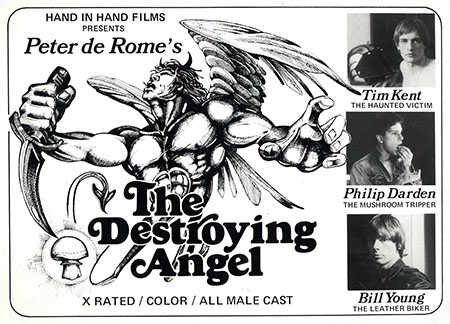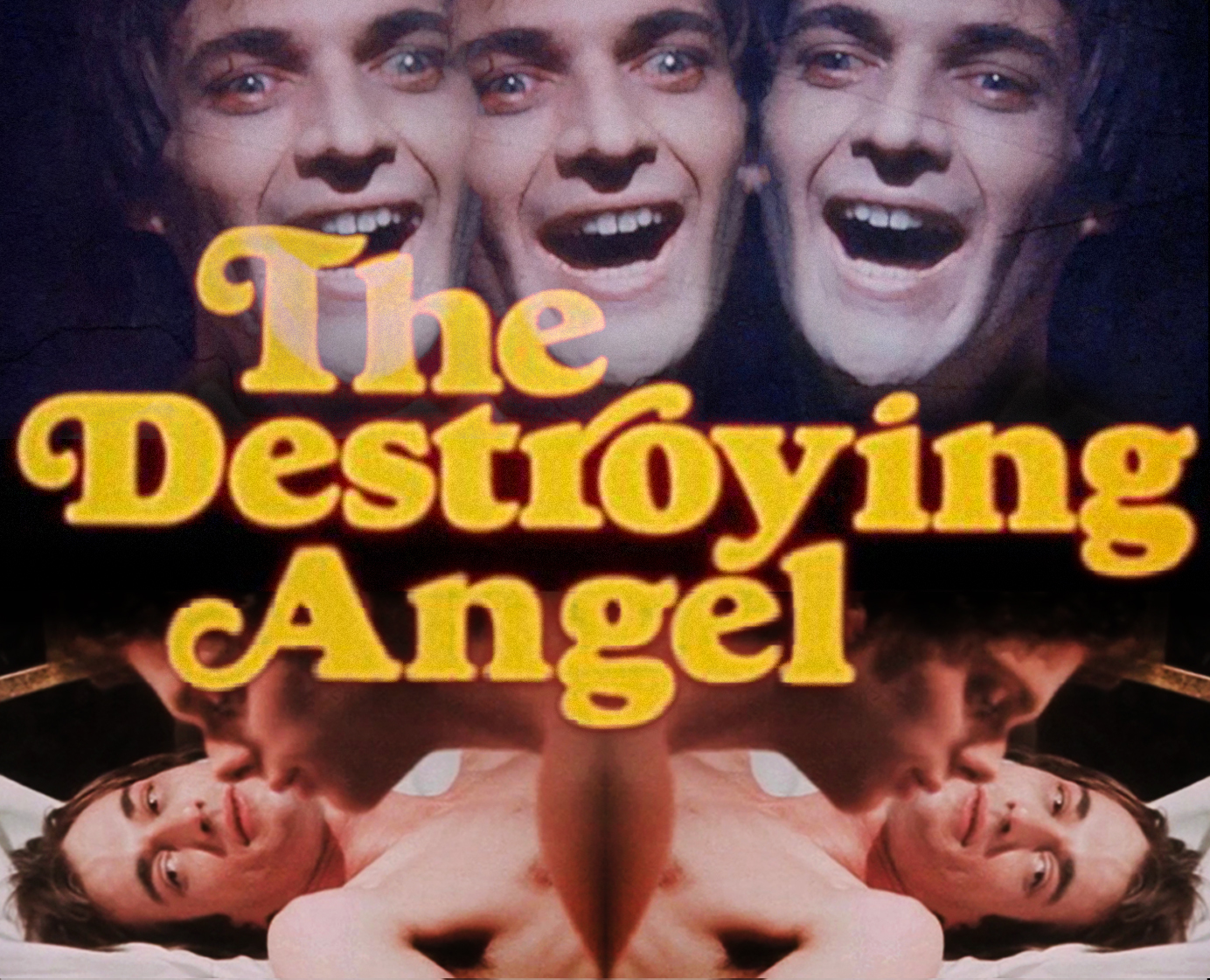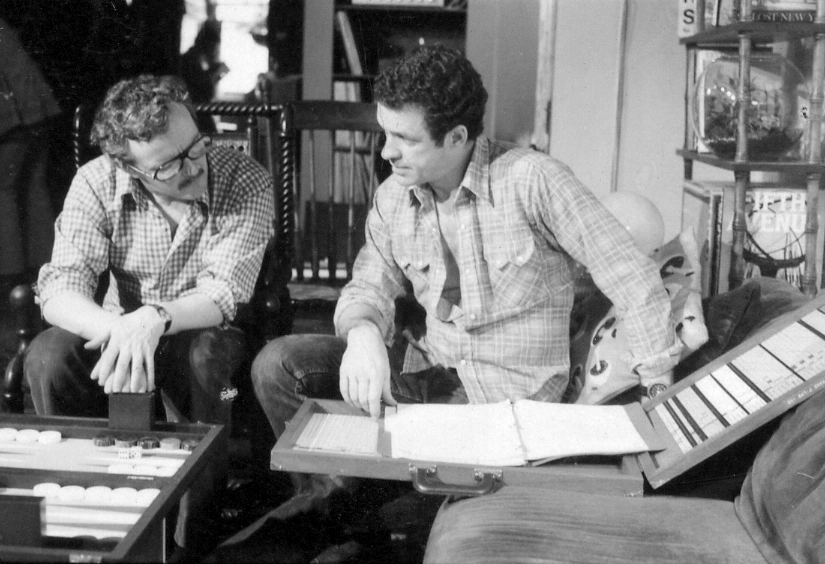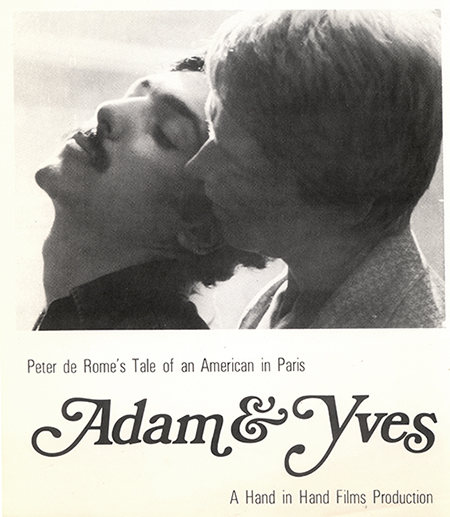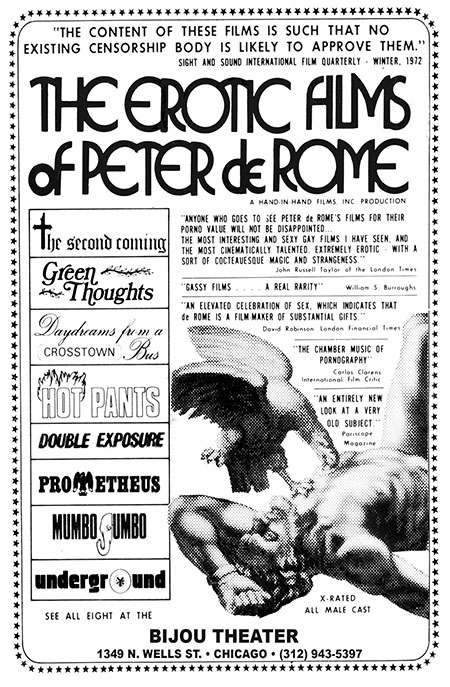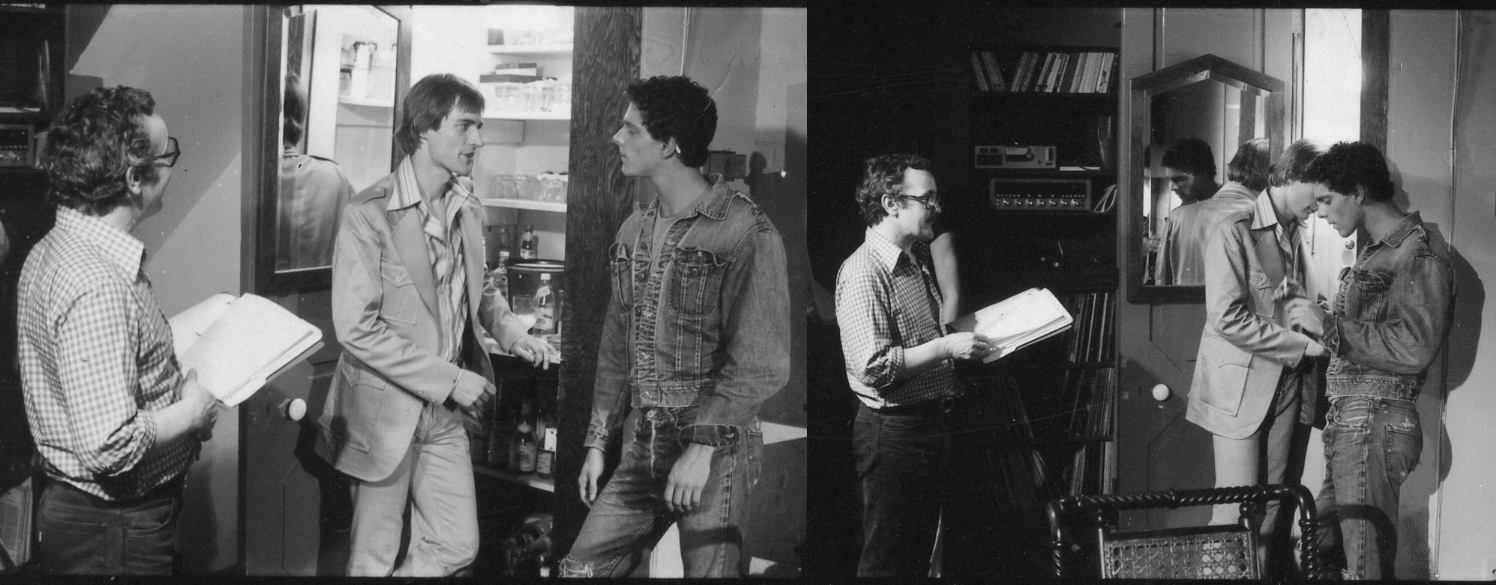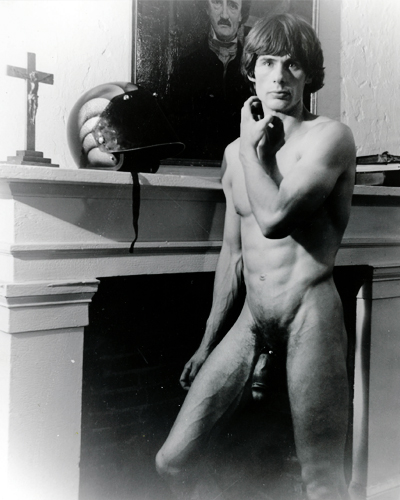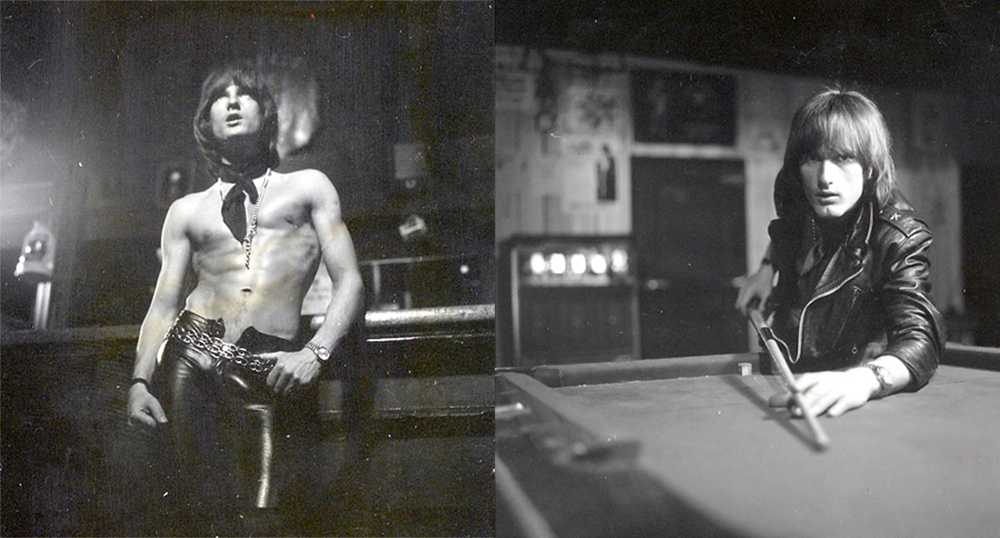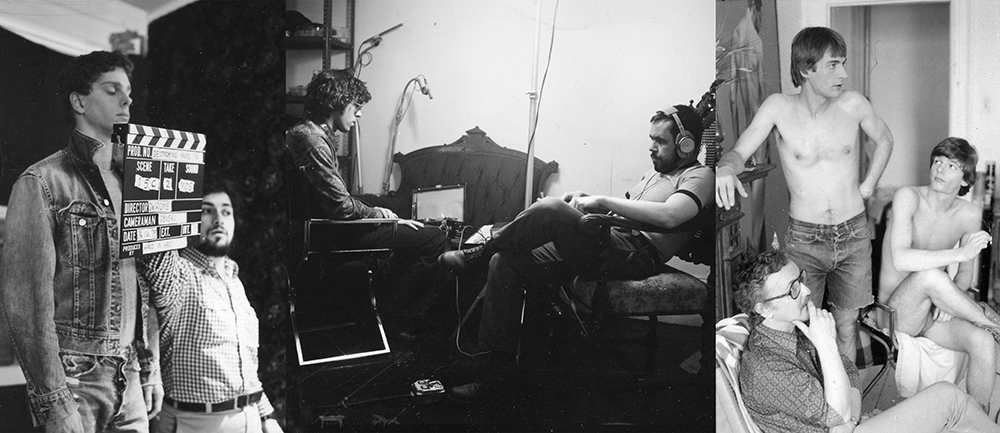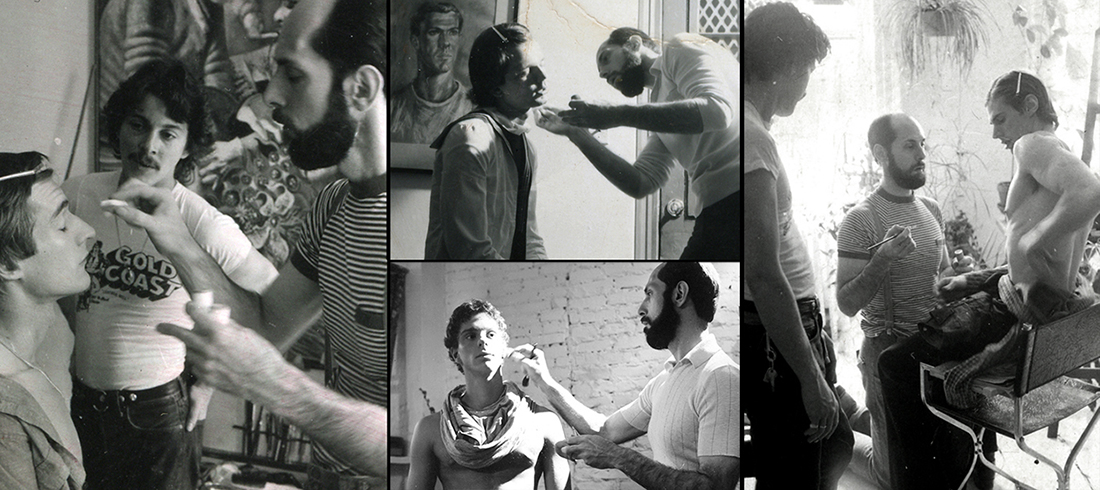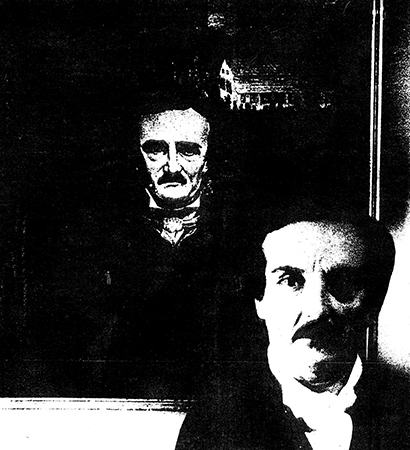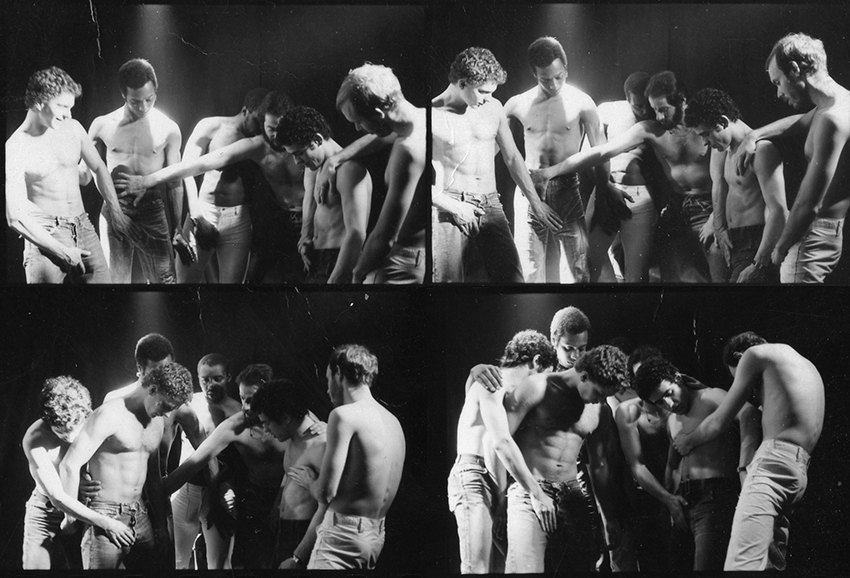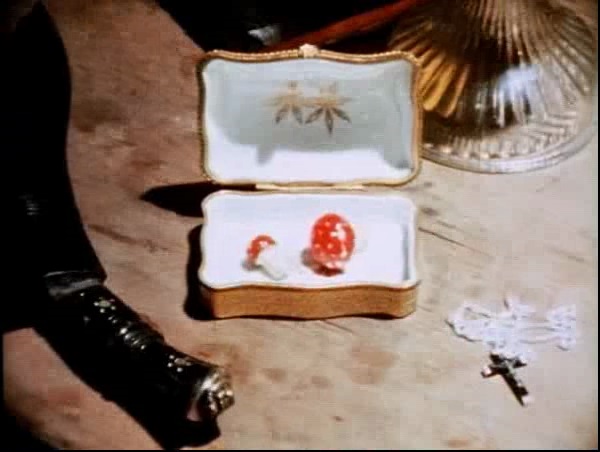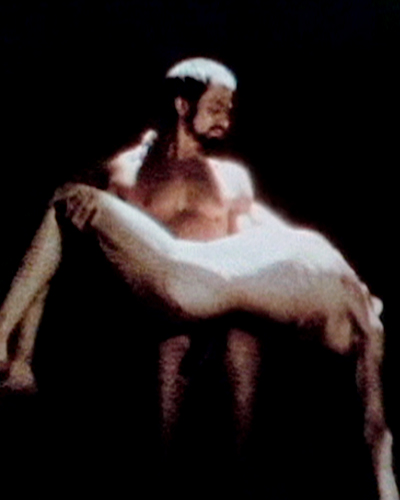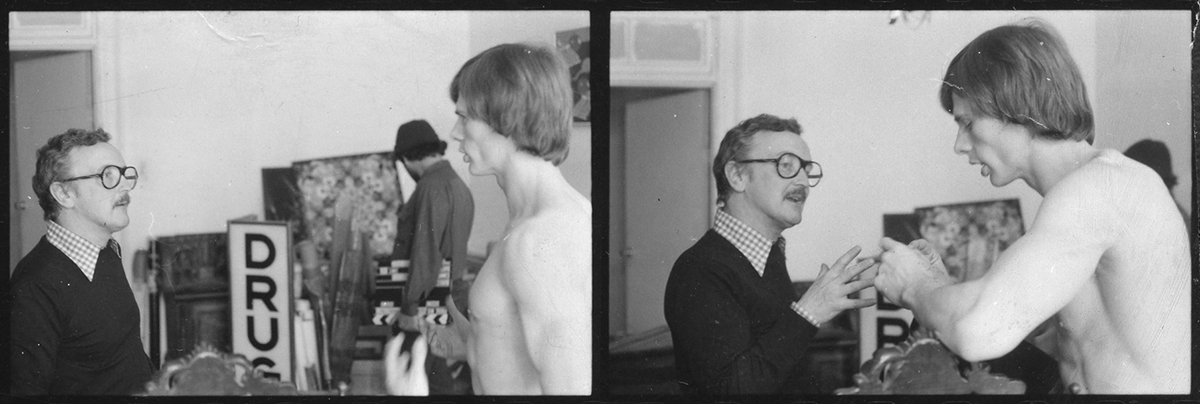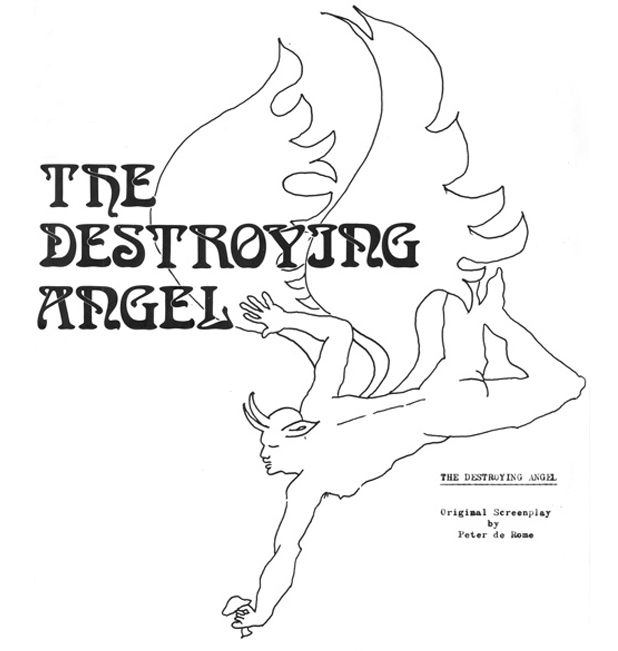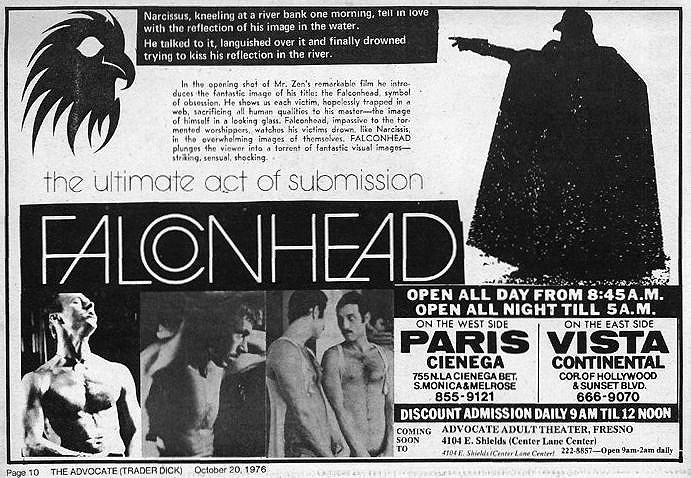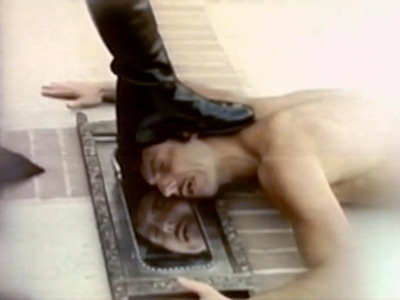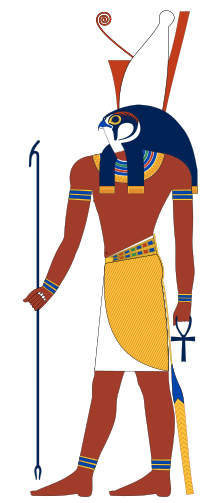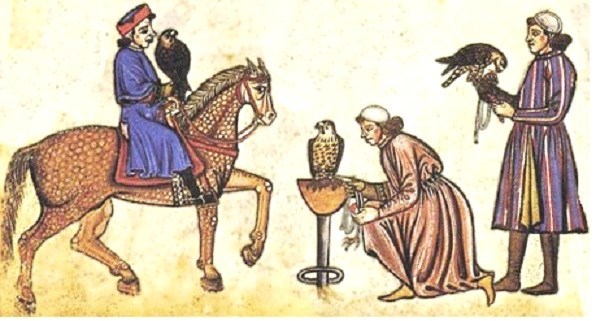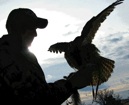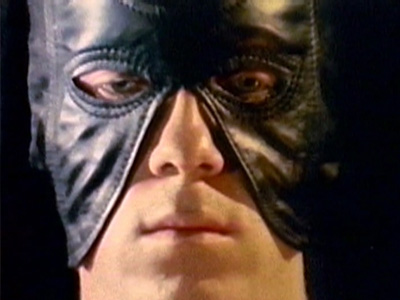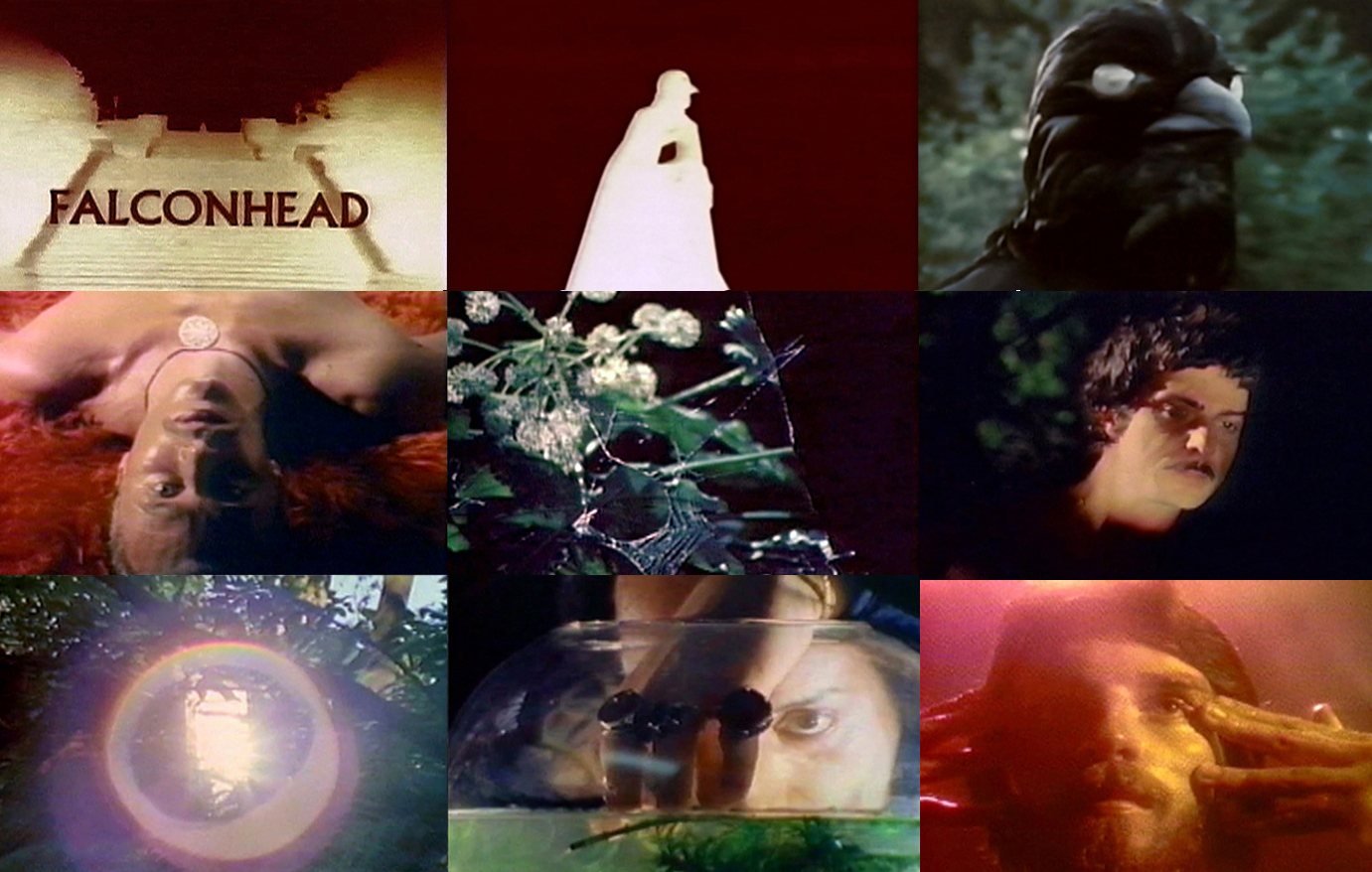By M. Webster
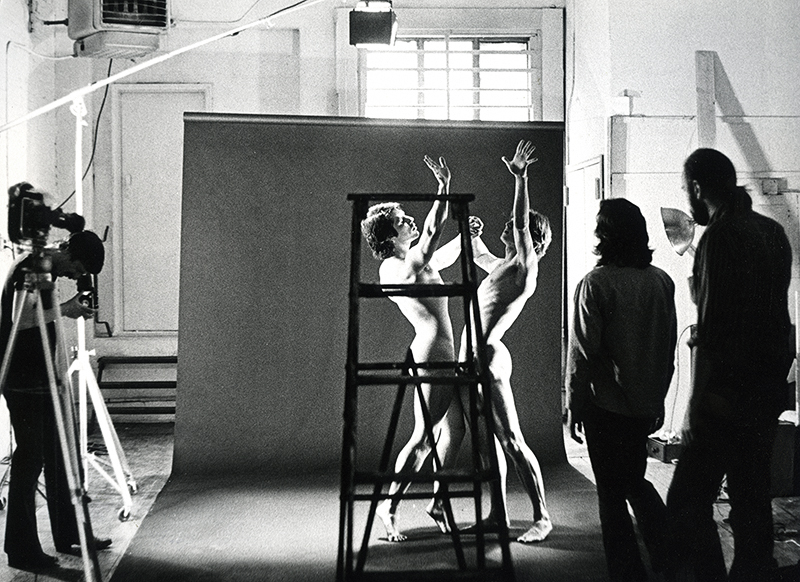
This photo from Arch Brown's 1973 production The Night Before captures a seemingly ordinary convergence on a film set. But the collection of individuals present together in the frame illustrates the intimate, intertwined, collaborative community who helped develop, then redefine East Coast gay porn film/video during the industry's first two decades. Captured during the second year of operation of influential studio Hand in Hand Films, this image depicts the initial connection point of three individuals whose mutually influential careers would continue crossing and joining paths, culminating years later at one of their own studios: legendary fetish video artist Christopher Rage, groundbreaking ultra-early gay porn filmmaker Arch Brown, and man of many hats of the classic gay porn world Frank Ross. The lineage they and their many other collaborators represent spans multiple critical periods and changes, which are reflected in their work: the beginning of the hardcore porn film industry, the socio-political shift from early LGBTQ liberation days to the AIDS crisis, and the technological shift from theatrically distributed film to home video.
Arch Brown was "one of the first above-ground underground filmmakers" according to Christopher Rage (aka Tray Christopher). His erotic filmmaking predated the birth of the hardcore porn film industry; he directed loops for venues like the Eros Theatre starting around 1968, before the shift to hardcore had truly (openly) begun. His movies stood out from the start because of their technical polish and inventiveness. He maintained a playful and trippy style throughout his porn film career, with a penchant for depicting everyday NYC encounters: average guys strolling and cruising on the streets and sites of New York, bumping into their next erotic adventure.
As Rage described in one of his final interviews, he met Arch after hooking up with a guy who had starred in one of Arch's movies. At a cast screening, Rage (at the time working as an escort and erotic novelist) asked Arch about the logistics of making porn films ("I'm a natural producer type.") and was offered a role in Arch's next production, which he accepted. This was One and Two and... (aka Fantasy Island, circa 1972), Rage's entry into the motion picture porn world. Rage was mentored in filmmaking by Arch during this period of the emerging commercial scene, working with him on set on future productions. He studied his highly efficient, low-waste style: “I would shoot 5:1… I learned how to put together a movie fast."
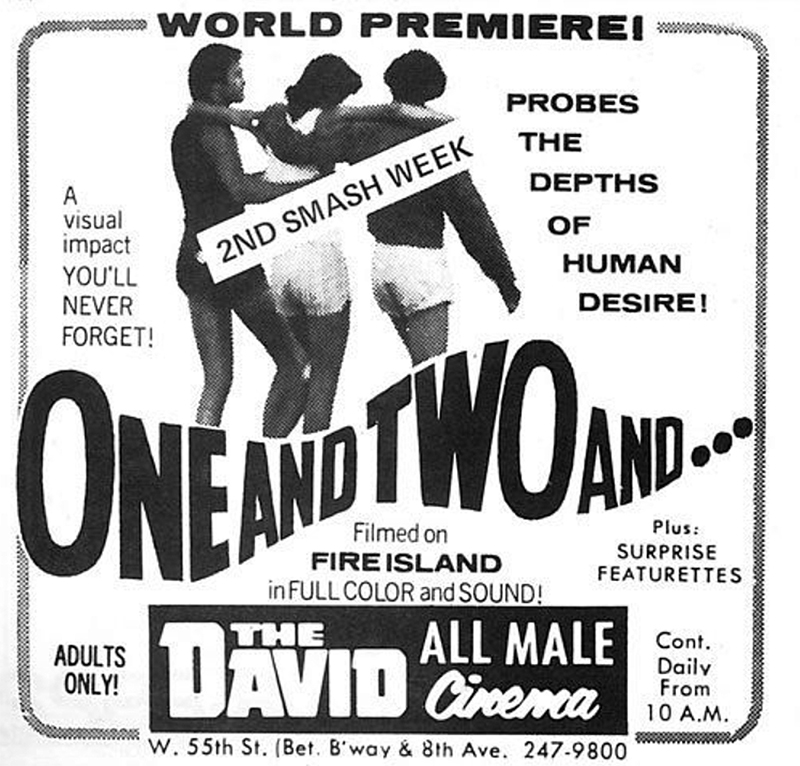
It was through Arch that Rage met Jack Deveau and Bob Alvarez at Hand in Hand Films, one of the most important early NYC gay porn studios, whose experimental and narrative releases were particularly grand in scope for the ‘70s gay porn world. Arch’s only picture with Hand in Hand, The Night Before, was about to begin production, and Rage wound up choreographing a fantasy dance number for the film (pictured at the top). Jack and Rage hit it off immediately, becoming close friends. This also marked the start of Rage's long working relationship with the studio. He continued to do promotion for Hand in Hand, wrote copy for many of their ads, recorded voice-overs for several films, and - most substantially - co-wrote and starred in the studio's most ambitious project, 1974's Drive, playing, in drag, the lead character/anti-hero, Arachne.
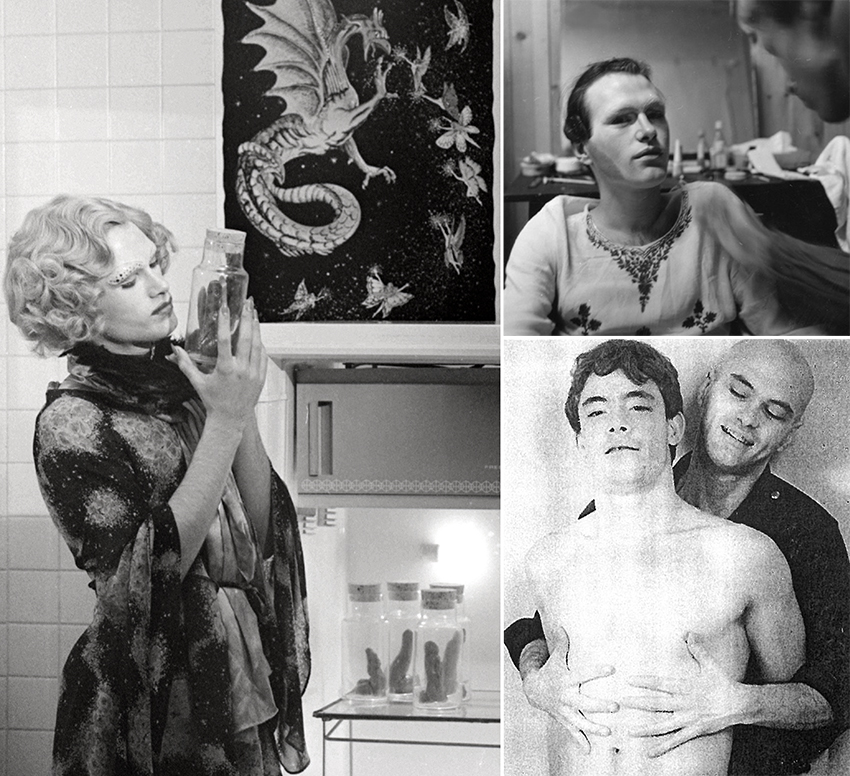
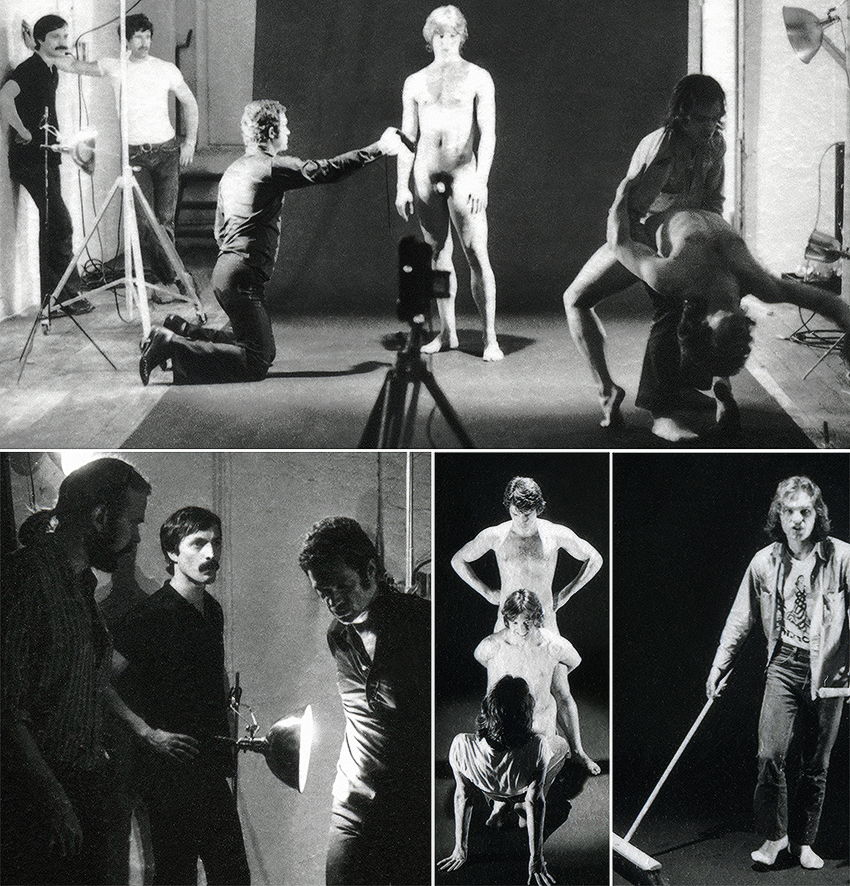
The Night Before also served as Frank Ross’ debut working in adult cinema. Cast for his one and only performing role as one of the leads (credited as Michael Kade), this film was a broad connecting point for Ross, introducing him to both Brown and Rage, as well as to Hand in Hand. He became studio's still photographer and production assistant for most of their remaining movies (probably having taken a number of the photos in this blog and elsewhere on our site!). Ross described Hand in Hand as an excellent school for filmmaking: "Jack was a willing teacher if he thought you had a passion for filmmaking, and it was under his tutelage that I learned so much about the craft of filmmaking. Nobody on the crew had any one specific job. We all wore many hats, from general assistants to lighting, propping, set decoration, sound recording, and slating scenes. It was an excellent school for learning filmmaking from its ground up.” Ross also introduced the studio to his composer friend, David Earnest, who would go on to score many Hand in Hand productions; Earnest would also do soundtrack work well beyond with Arch Brown, further into Arch's career...
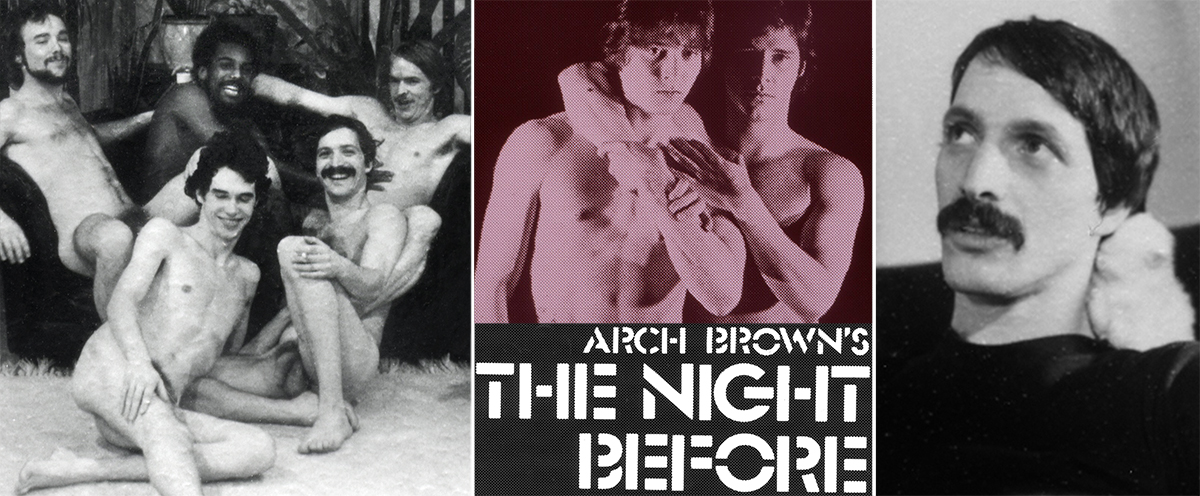
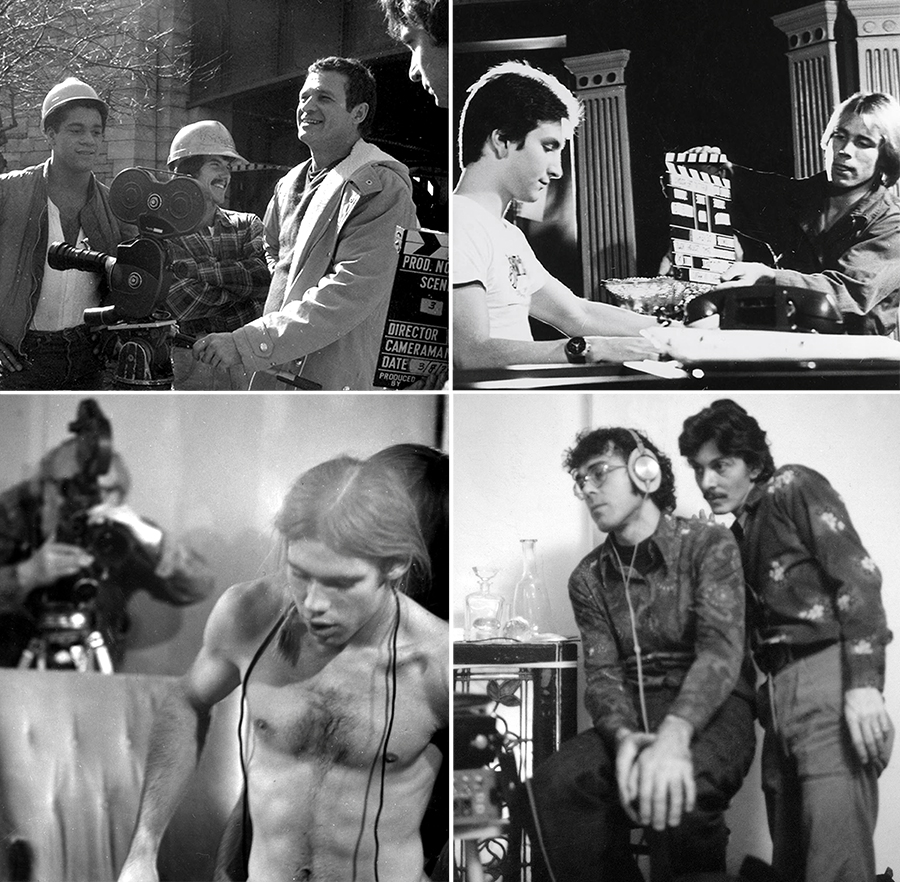
This early cinematic era of the 1970s captured the exuberance of the sexual liberation and LGBTQ liberation movements: freewheeling sexuality, cruising, and public landmarks of sex and gathering. Hand in Hand's output illustrates several threads common of East Coast work of the period: experimental film and theater roots, narrative emphasis and clever scripting, heavy focus on public/communal settings, rougher and more mature men than typical of the West Coast porn scene, and interest in the psychological dimensions of sexuality, rarely shying away from emotional complexity or kinky sexual material. This early period was one of experimentation, exploring the possibilities of the genre before its conventions crystalized. What could cinematic sex look like and be? And as Ross noted, the scenes on each coast , at that time, were distinct and tight-knit. "The New York gay porn community was very small and very loyal to each other,” with many points of overlap between the various studios, makers, and cast and crew members.
The technological rupture of the affordable home video camera fundamentally altered porn movie-making and the distribution model. In 1980, Rage borrowed an early video camera, and by 1981, he had debuted his first productions, Superstars 1 and Solojerk. Initially unsuccessful, he edited them together, the same year, into The Best of the Superstars for distribution via Joe Gage’s Gagetapes line with HIS Video. Best of… sold well and provided the funds for Rage to make further work, as well as to found his mail order business and production studio, Live Video Inc., making him one of the forerunners in the shot-on-video market. This quicker, cheaper format allowed for niche productions that the costly film theatrical model could not support, enabling Rage to exclusively self-distribute his more intense, transgressive, and fetishistic movies (including S/M, fisting, and watersports focuses) for a smaller, dedicated market.
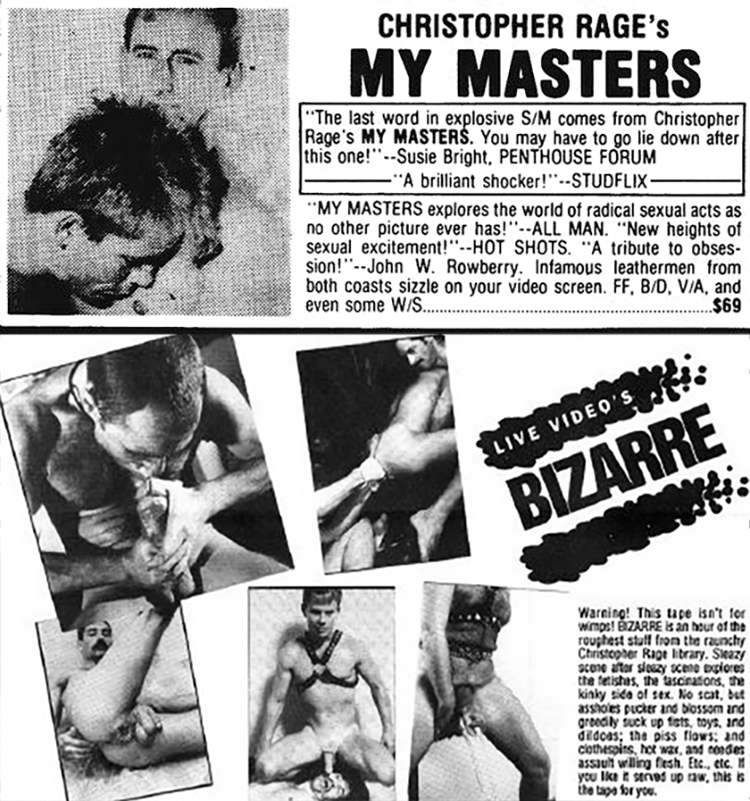
The aesthetic Rage developed moved away from the cinematic tradition of Hand in Hand and '70s films and to a style very in sync with early video art: raw, gritty, intimate, and confessional. Shoots were simple and unpremeditated, often consisting only of Rage and the performer(s), plus maybe an assistant or two, and letting whatever the cast wanted to display reveal itself to the camera. The focus moved from public spaces and the gay community at large to private and interior. Rage summoned the subterranean desires and primal sexual compulsions of his performers, displaying them to the home viewer in candid direct address, disorienting montage, unusual and extreme bodily acts, and uneasy juxtaposition of image and sound (all was set to his own original musical compositions and haunting, layered soundscapes). Rage's darker, obsessive tone had been there from the start (clear in his Hand in Hand work on Drive), but deepened in his directorial pieces, driven by his need to make honest, personal, and provocative work. “I was always up to something. I wanted to corrupt society one way or another by saying, "Try this... Look at this... Did you ever consider this?... C'mon, don’t you want to see this... Aren't you amazed that people do this?... Maybe you don't want to do it yourself, but wouldn't you like to see it?”
Frank Ross, through the '70s onward, maintained a remarkably broad and sustained presence in the NYC gay porn sphere (also extending for a period into the West Coast) throughout his extremely lengthy career, moving beyond his work for Hand in Hand to serve in countless roles with a wide array of affiliates and studios. Ross seemingly worked with just about everybody in some capacity. If one were to map out the network of figures in vintage gay porn, Ross is certainly one of the nodes with the greatest number of connections; his list of associates is too vast to fully enumerate (encompassing figures including Steve Scott, Al Parker, Jack Wrangler, Toby Ross, and our own blog writer, Josh Eliot, to name just a few).
The late '70s through the '80s saw a dense matrix of overlap among the trio and other key players. Rage's only shot-on-film directorial work, 1982's Sleaze, featured photography and editing by Arch Brown. This was one of Rage's handful of movies to be distributed by P.M. Productions, another prolific NYC studio in the '70s/'80s. P.M. also released a large number of Arch's films (including Pier Groups, Harley's Angels, Dynamite, Muscle Bound) - often with soundtracks by David Earnest, and occasionally with Rage's name popping up as photographer/editor. Ross directed extensively for the studio Satellite during the '80s, where he worked repeatedly with iconic performer Joe Simmons; Simmons' porn career began with Chris Rage (in They All Came, 1984, for P.M. Productions) and he remained a mainstay in Rage’s Live Video Inc productions. Arch and Rage collaborated frequently under the Live Video Inc. banner, with Arch doing additional photography for Rage's Wildside (1984), Tramps (1985), and more. J.D. Slater, another of Rage's most frequent stars, appeared in Brown's lone directorial piece for LVI, Rough Idea (1985), as well as in a second 1985 movie for Spike Video, Bring Your Own Man (stacked with a cast of Rage regulars). For both movies, David Earnest did music and Christopher Rage served in various behind the scenes roles. (A further extension: Hand in Hand's final film, the 1985's In Heat, features a performance by Slater.)
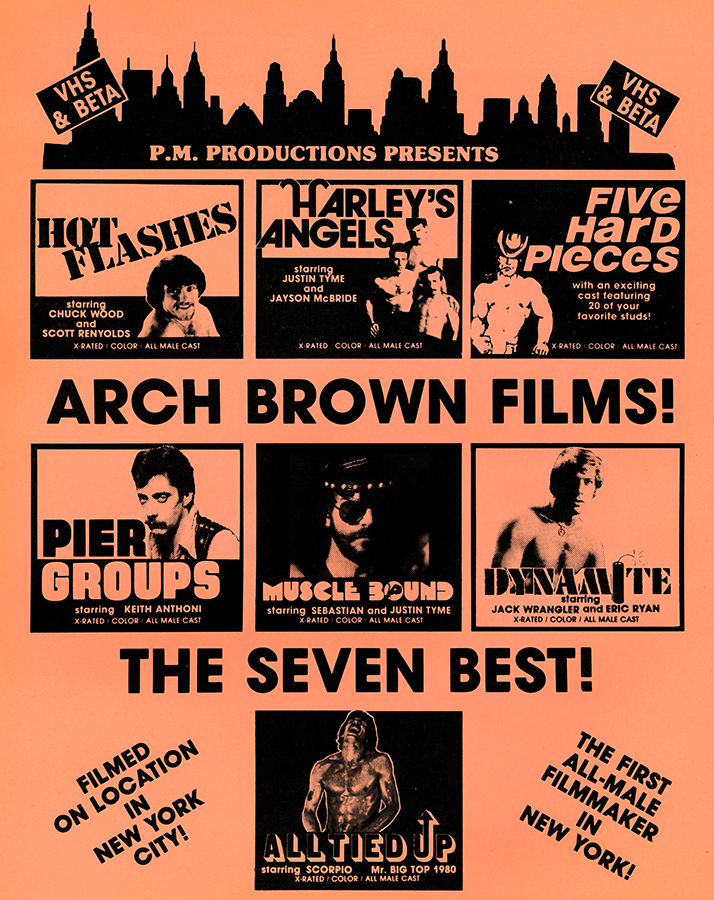
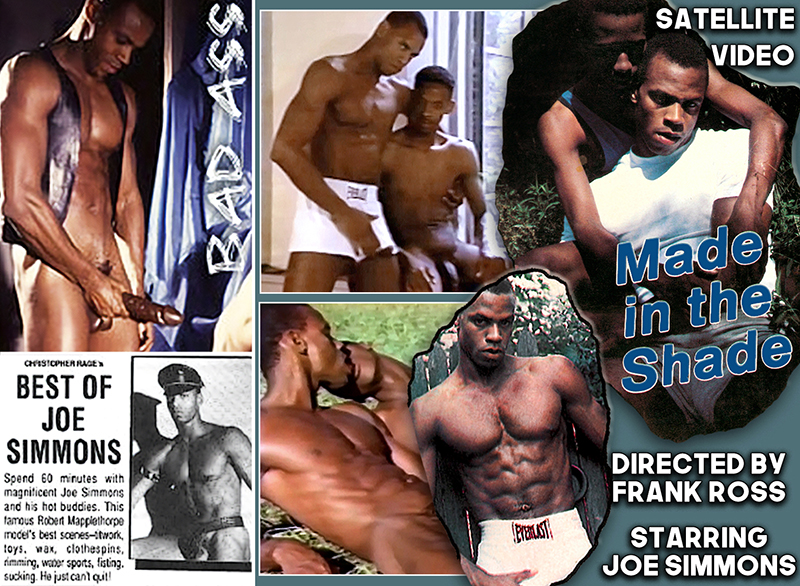
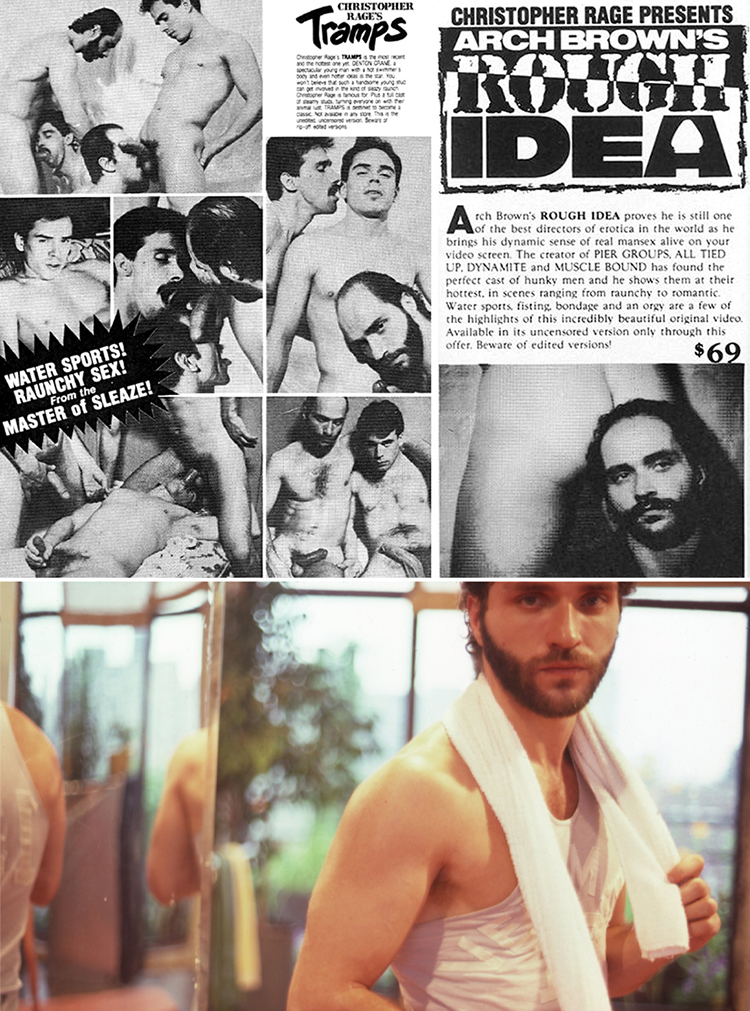
The AIDS crisis brought a new, heavier resonance to Rage’s work, which was always an emotionally honest reflection of what was going on in his life and mind - especially following his own 1987 HIV diagnosis. After learning this news and a taking short break from filmmaking, Rage returned but was having difficulty completing his movies. He brought his friend Frank Ross on board to help him finish his 1989 production Three Little Pigs. Ross: “I was to be assistant director, but was there were more for emotional support. Tray [Chris] wasn't feeling strong enough to get the project done and needed a collaborator.” From then onward, Ross’ presence at LVI increased in importance. The two worked together on a few more pieces as Rage’s health declined, and Rage asked Ross to begin directing for LVI, which he did beginning with Scum, released the same year as Rage’s death: 1991.
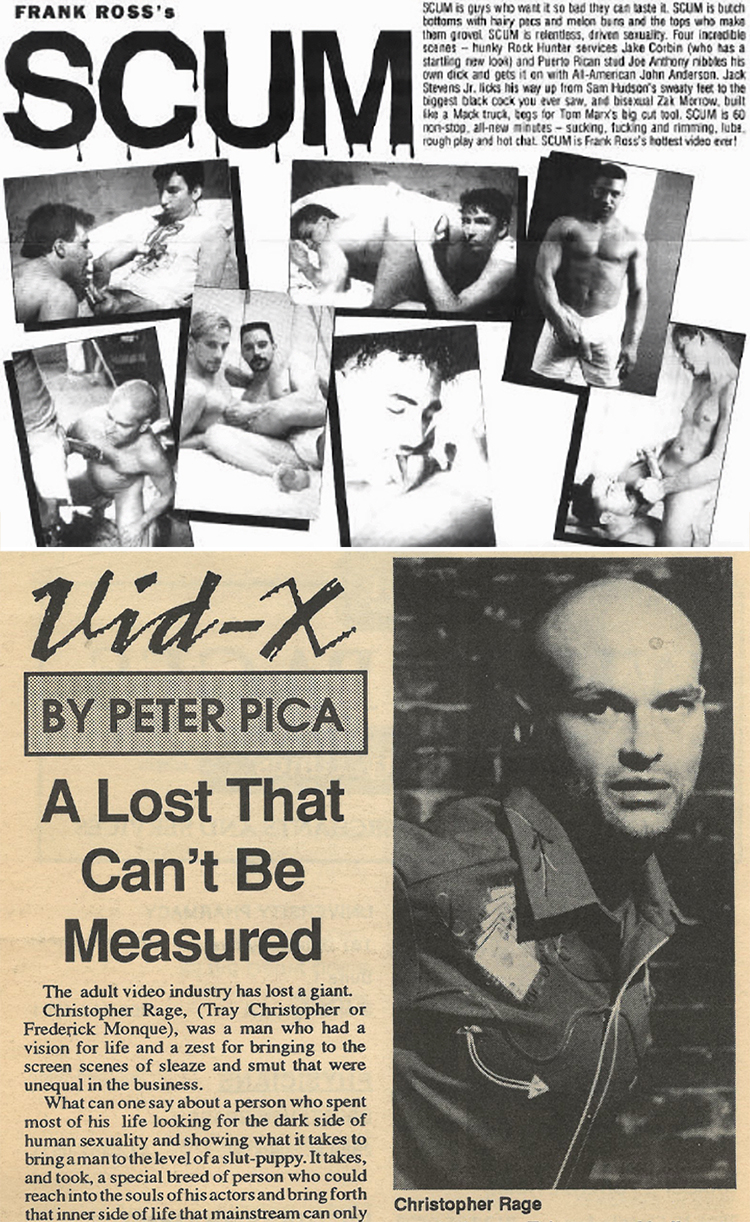
Ross remained with Live Video Inc. after Rage's passing, directing more videos through them and becoming the studio’s vice-president for a period of time. After eventually leaving LVI, Ross founded his own studio, 3rd World Video, which operated from the mid/late ‘90s to 2020 (Ross passed away in 2021). Ross credits Rage with introducing him to transgressive, boundary-pushing fetish and S/M material, and Ross brought this to 3rd World Video, an explicit extension of the LVI ethos. Ross: “I tried to continue the legacy of Christopher Rage, who always attempted to break barriers sexually and bring to the screen the reality and popularity of extreme fetishes which no one else would consider or produce... I happily became a porn pariah and enjoyed shocking the world in any way I could.”
The sustained connection between Brown, Rage, and Ross is one example of a powerful lineage of the kind you’ll find when sifting through the credits and histories of classic porn. Compared to today, the amount of people working in the industry in its initial decades was tiny, so the overlapping and interconnectedness was more apparent. Tracing this one thread: Brown was a foundational figure from the start of the industry and mentored Rage; Ross met Brown and Rage at Hand in Hand where Rage and Ross continued to learn their craft; their three careers intersected again over the years in various places and ways, and with other repeat collaborators; Rage established his own influential studio, where he worked with Brown and Ross; and Ross continued sustained Rage's studio after Rage's death, then continued that legacy at his own studio until just a few years ago.
Bijou just remastered and re-released Christopher Rage's Tramps, which you can now find on DVD and Streaming! And keep an eye out in future months for Arch Brown's Rough Idea and other Live Video Inc. productions.
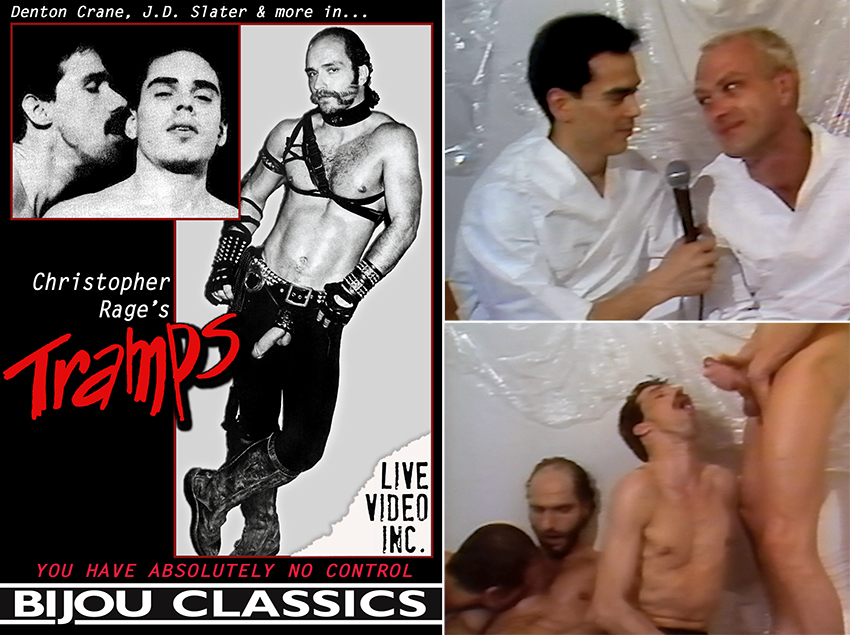
Sources:
-Manshots, April 1991 (Interview with Christopher Rage)
-Good Hot Stuff: The Life and Times of Gay Film Pioneer Jack Deveau (Interview with Frank Ross)
-Gay Erotic Video Index (filmographies; vintage ads)

